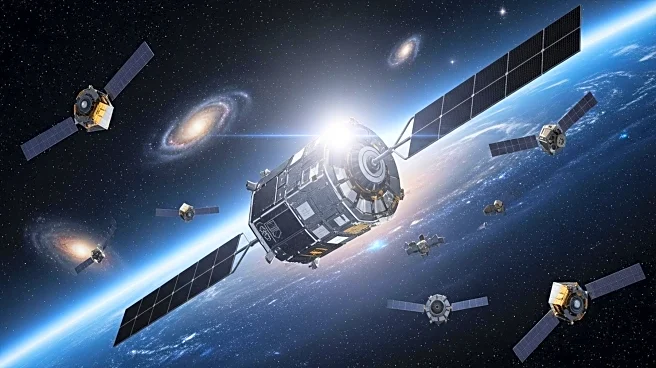What's Happening?
SpaceX successfully launched 28 Starlink satellites aboard a Falcon 9 rocket from Cape Canaveral Space Force Station. The launch occurred at 7:56 a.m. EDT, marking the company's 110th Falcon 9 mission of the year. The rocket's first stage booster, which had flown 14 times previously, landed on the drone ship 'A Shortfall of Gravitas' approximately 8.5 minutes after liftoff. The mission, named Starlink 10-22, is part of SpaceX's ongoing efforts to expand its satellite megaconstellation, which aims to provide global internet coverage.
Why It's Important?
The successful deployment of 28 Starlink satellites is a significant step in SpaceX's plan to enhance global internet connectivity. The expansion of the Starlink constellation could have profound implications for remote and underserved areas, potentially bridging the digital divide. Additionally, the frequent reuse of the Falcon 9 booster demonstrates SpaceX's commitment to cost-effective and sustainable space travel, which could lower the barrier to entry for future space missions and commercial ventures.
What's Next?
SpaceX plans to continue its aggressive launch schedule, with more Starlink missions expected in the coming months. The company aims to further increase the number of satellites in orbit, enhancing the network's capacity and reliability. As SpaceX progresses, stakeholders such as telecommunications companies and regulatory bodies will likely monitor the impact of Starlink on existing internet infrastructure and services.














